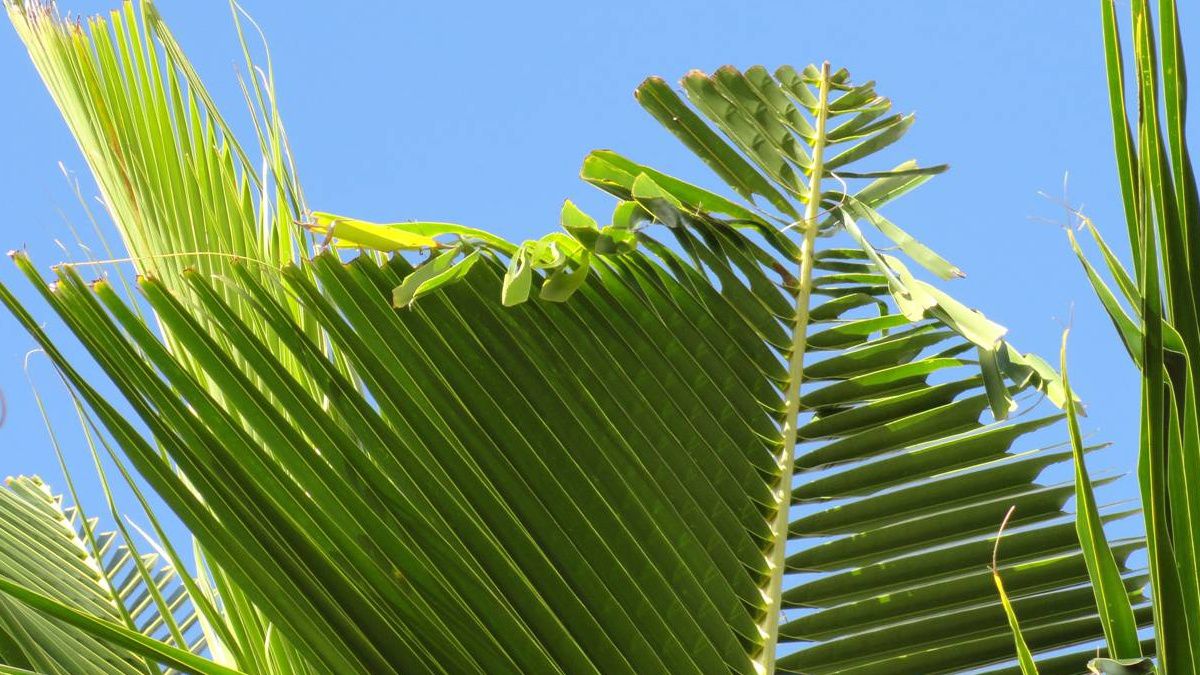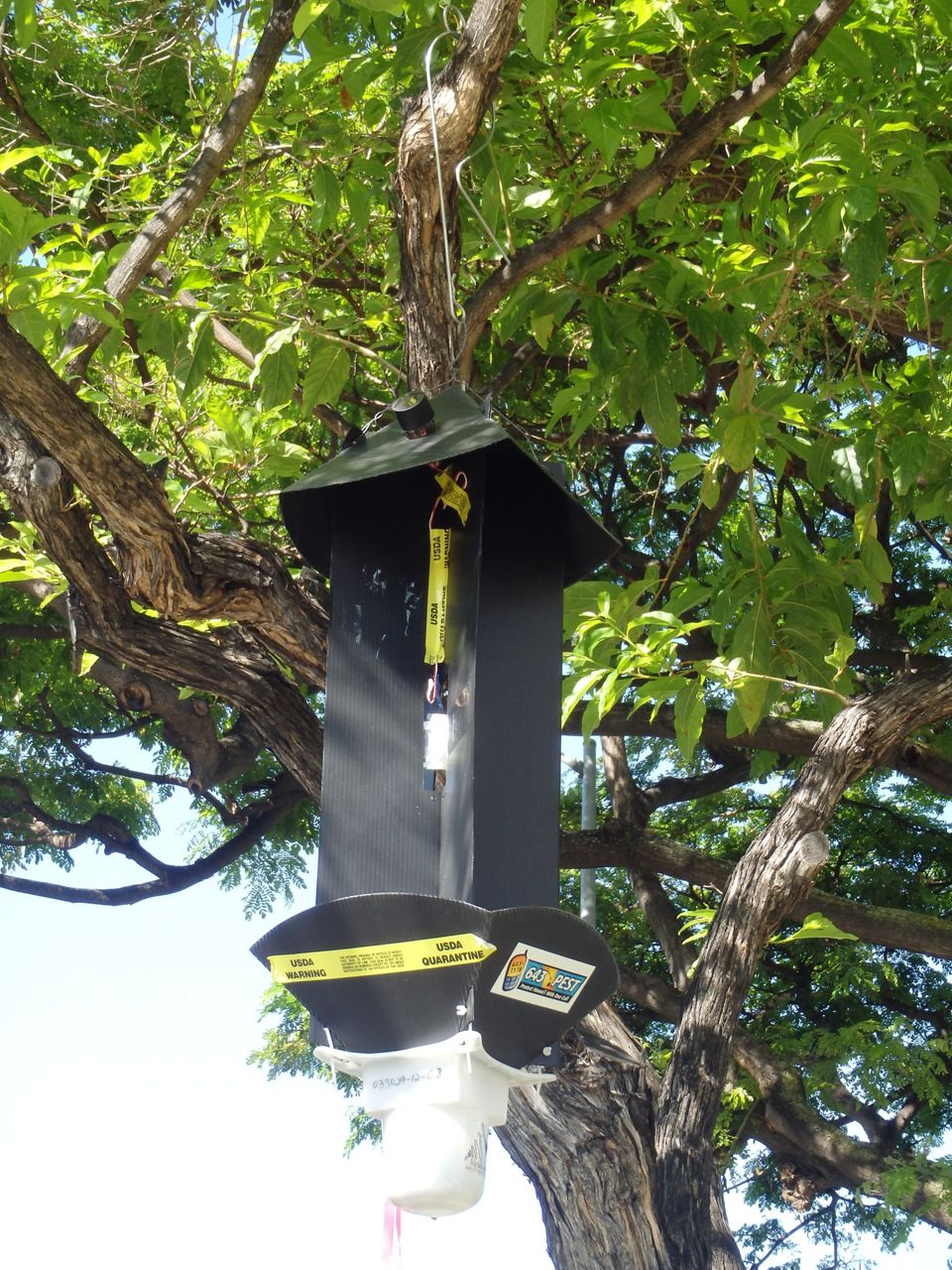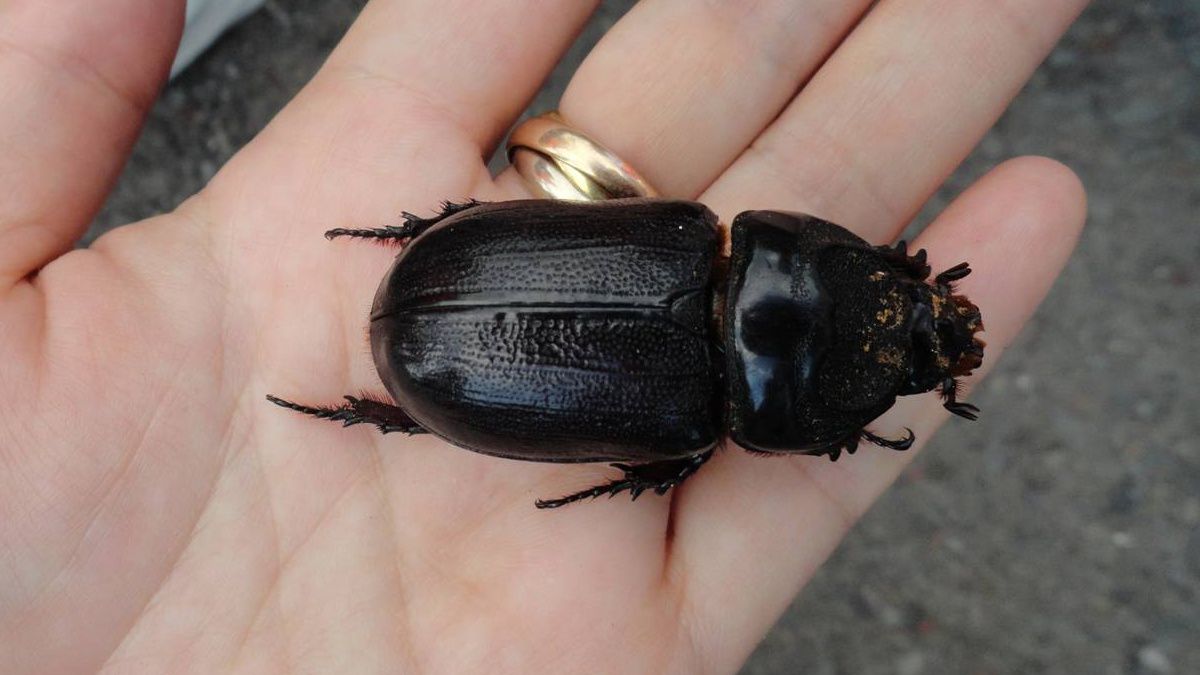LIHUE, Kauai — The invasive coconut rhinoceros beetle has been discovered on Kauai twice in the last week, according to a news release from the Hawaii Department of Agriculture.
This marks the first time the destructive beetle has been detected on any of the Hawaiian islands outside of Oahu.
The Kauai Invasive Species Committee found the first coconut rhinoceros beetle (Oryctes rhinoceros) on May 21 in a trap near the green waste transfer station near the Lihue Airport. The second beetle was found on June 2 in another trap nearby.
The coconut rhinoceros beetle was first detected on Oahu in Dec. 2013 at Joint Base Pearl Harbor-Hickam and is now widespread. The highly destructive species bores into the crowns of palm trees to feed on sap. About 10 to 50% of trees attacked by coconut rhinoceros beetles die because the beetle damages the growing point of a palm or the wounds created by the beetle make the tree vulnerable to insects or pathogens. After a palm tree’s trunk rots, the tree may fall unexpectedly.
The beetle is a pest in many Pacific Islands, including Palau, Fiji, Wallis, Nukunonu, American and Western Samoa, and Guam. In the Republic of Palau, the first beetle was discovered in 1942, and the coconut palm has been completely wiped out on some islands, according to DLNR’s Hawaii Invasive Species Council.

“When CRB was first detected on Oahu about 10 years ago, early eradication efforts were hampered by the lack of funding and lack of information about the pest,” Sharon Hurd, chairperson of the Hawaii Board of Agriculture, said in the news release.
The USDA currently provides about $2 million per year to the HDOA for CRB response efforts, and additional funds were approved during this year’s legislative session.
“We want to make sure this does not happen on Kauai and we appreciate the assistance of partner agencies and all the research that has gone into CRB eradication and control,” Hurd added.
The Hawaii Department of Agriculture, the Kauai Invasive Species Committee, and four members of Oahu’s CRB Response team are on Kauai implementing a response plan. This includes surveying within a one-mile buffer zone of the first detection, setting up 25 additional traps, possibly fumigating green waste at the transfer station and possibly deploying dogs trained to detect the beetles.

The Lihue refuse transfer station’s green waste was closed after the discovery of the two beetles, according to a news release from Kauai’s Department of Public Works. The green waste will be closed through next week, as invasive species crews are responding. The closure may be extended.
The beetles often breed on green waste. Because of this, HDOA said in July 2022, that the movement of green waste and similar material would be restricted within Oahu and from Oahu to neighbor islands.
Tissue samples from the beetles found on Kauai will be tested at the University of Hawaii to try to determine their origins.
Michelle Broder Van Dyke covers the Hawaiian Islands for Spectrum News Hawaii. Email her at michelle.brodervandyke@charter.com.



